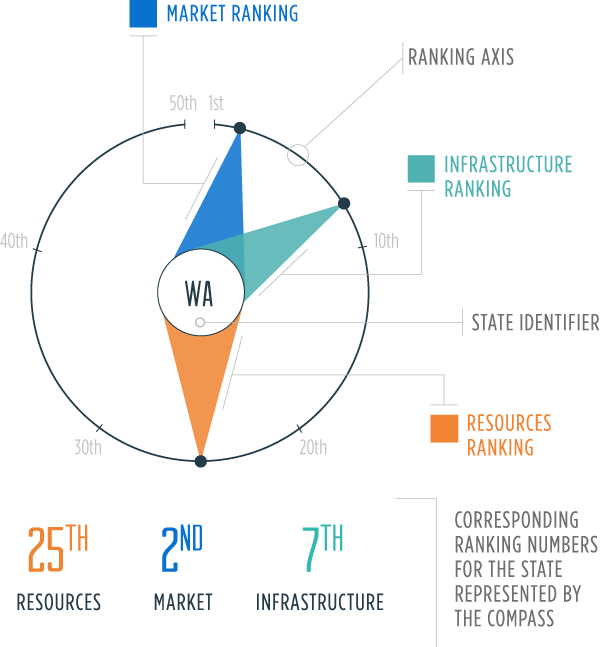Solar Southwest > Arizona
Resources: A measure of total energy production and consumption per capita
Market: The cost of consumption, measured in electricity prices and gasoline taxes
Infrastructure: Capacity to generate and refine energy sources; miles of pipelines
Arizona's economy is not energy-intensive. The state government is Arizona's largest employer, and the largest private employers are in the retail, service and finance sectors.
The Palo Verde Nuclear Generating Station in western Arizona is the largest nuclear power plant in the nation. Because of its desert location, Palo Verde is the only nuclear plant in the U.S. that is not adjacent to a large body of water. To meet its cooling needs, the facility uses treated effluent from the cities of Phoenix, Scottsdale, Tempe, Mesa, Glendale and Tolleson.
Production trillion btu
Oil
Gas
Coal
Wind
Solar
Hydro
Biofuel
Nuclear
net energy Production trillion btu
Consumption trillion btu
Oil
Gas
Coal
Renewable
Nuclear
Gasoline Tax total state + federal, 2014
AZ
USA
Key Policies
Requires 15% of the state’s electricity consumed in 2025 to come from renewable energy resources.
Requires the use of an oxygenated motor gasoline blend called Arizona Clean Burning Gasoline in Maricopa County, including Phoenix, year-round, and in the Tucson area during the winter.
Requires permits and compliance bonds for oil and gas well drilling. Permit fees are $25, and compliance bonds begin at $10,000 a well and increase for deeper wells.
Electricity net production, trillion btu
AZ
USA

